-
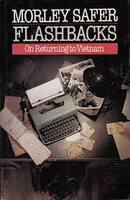
This is a book by Morley Safer about his memories in Vietnam.
-
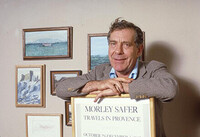
This is a biography about Morley Safer, and the contributions that he made to journalism.
Morley Safer was an American journalist who covered the Vietnam War. He worked alongside Walter Cronkite to report on the war. One of his most famous works was The Burning of Cam Ne, in which he covered a search and destroy mission in a cluster of villages in Vietnam. Safer was on the front lines with US Marines as they were burning down villages, and he reported on all of it. Because the footage shown was so bleak, and the villagers so helpless, the US Military tried to censor the report because it was affecting morale. Eventually, though, US public opinion would shift in favor of Safer. Safer has since gone on to be featured on CBS's 60 Minutes, and has written a book about his experiences in Vietnam.
-
This is a blog entry that includes part of an old 60 minutes segment.
-
50 years after Morley Safer and Walter Cronkite reported on the burning of Cam Ne, a pair of CBS anchors, Kristine Johnson and Vladimir Duthiers, play the footage for their footage out of respect.
-
A recounting of the first dispatch Stanley Karnow sent for the war in Vietnam
-
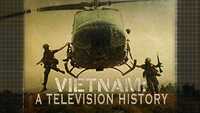
A direct accounting of the American conflict in Vietnam from primary sources and journalists embedded in the conflict.
-
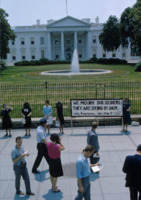
The late 60s and early 70s in the United States witnessed an enormous wave of anti-war protests, raging from the West to East Coast, with Washington D.C. being a main ground of the movement. Thousands of protesters gather at the Eclipse, National Mall, and the Lafayette Park, the front yard of the White House to show their solidarity. During the Mayday Protest in 1971, the protesters planned to shut down city and handicap the goverment by camping out on the edge of downtown Washington. These joint effort increasingly placed pressure on the President and his administration that they were trying to find a way to get out of the war. Note that most of the big protests took place in the late 60s to early 70s, a time when media began to expose more brutal truths about the war, suggesting the its influences on changing the American public opinions on the ongoing conflict.
-
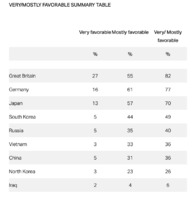
This is a survey conducted by the Gallup on November 13-15, 2000 gauging the American opinions on the Vietnam War after twenty-five years. Although it does not reflect the Americans people's opinions on the war while it was taking place, this survey provides many intriguing insights into the Americans' perspective of the war in its aftermath.
According to the Gallup, the American public still had negative opinions of Vietnam in 2000, with only 36% viewing Vietnam through a favorable lens. This number is significantly lower than other countries that the US was at war with such as Japan (70%) and Germany (77%).
Moreover, the survey reveals that time may have faded the memories of the Vietnam War for people in the current generation. At the time the survey was conducted, seventy percent of Americans acknowledged that the United States lost that war. Sixty percent correctly stated that the United States backed the South Vietnamese, while twenty percent were incorrect about the U.S. troops supporting North Vietnam.
It is also noteworthy that there was a knowledge gap about the war among young people, the generation growing up with little to no memories of the war. In details, 27% of Americans aged 18-29 said the United States backed the Northern Vietnamese government, 45% said they sided with the South Vietnamese, and 28% had no opinion. Meanwhile, Americans over the age of 30, who likely remembered the war from watching television coverage, were able to answer correctly about the United States providing support for the South Vietnamese government.
This survey indicates three crucial keys. First, the American people still viewed Vietnam in a negative light after twenty-five years, whether due to patriotism during the war or general lack of interest in the country. Second, the younger generations were less likely to know about or remember the war compared to the older ones who grew up watching news coverage of the war. Last but not least is the impact of journalism in shaping the American public understanding. While this survey does not directly mention it, it appears that television coverage of the war was a major reason why the Americans who lived and grew up during the war could still remember it. Therefore, the war journalism did not only bring the news from the front line to the Americans at home but also allowed the war to live in people's memories.
-

Reporting American at is a three-hour long film documentary exploring the evolution of American war journalism in the twentieth century, from World War II to the Vietnam War. It spotlights various journalists and their stories about reporting from the battlefield. Through these narratives, the documentary further emphasizes the challenges encountered by these reporters and highlights the role of journalism in shaping the course of the war as well as the public understanding.
This documentary features two journalists who are included in our exhibition, Walter Cronkite and Morley Safer along with eight others Vietnam War correspondents. Therefore, I highly recommend "Reporting America at War" to those who are interested in learning more about the role of journalism in modern wars.
-
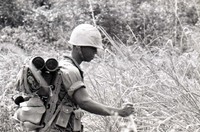
The Special collections and Archives website for University of Nebraska-Lincoln holds documentation of Beverly Deepe Keever's work. This collection contains many photos taken by Keever of American soldiers in Vietnam in 1967.
-
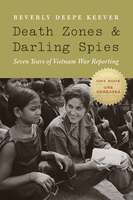
Death Zones & Darling Spies is a book written by Beverly Deepe Keever. The book focuses on her own life from living in Nebraska to being in the field as a journalist in the Vietnam war.
-
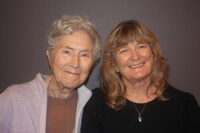
Beverly Deepe Keever and Ann Auman, two professors at the University of Hawaii discuss Keever's experiences in the Vietnam war. Keever goes into depth from her childhood explaining why and how she became a journalist as well as what led her to Vietnam. Throughout the article Keever also gives context to some of her published articles giving background to why she was covering certain topics as well as her experiences in the warzone while covering stories.
-
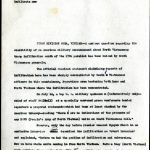
This article written by Beverly Deepe Keever covers the suspicion and discovery of North Vietnamese soldiers crossing the 17th Parallel into South Vietnam. With US involvement at stake, the legitimacy of captured North Vietnamese troops in South Vietnam was important. Through the article, Keever covers an interview done with a captured NVA soldier. The content in the article contains the captured NVA soldier's testimony (why he and other NVA troops were ordered to march into South Vietnam), while including statements coming out of Washington at the same time.
-
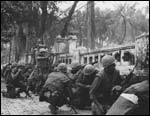
This is an article covering some of the black soldiers' perspective on the US military's systemic racism during the Vietnam War
-

This is an article in which GIs describe the death of one of their friends, nicknamed Winky. This article is hosted on Grammarphobia, a blog Stewart runs with Patricia T'O. Connor.
-
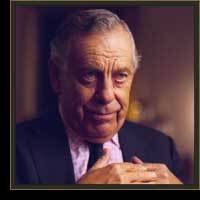
This was one of the first reports of the search and destroy operation in Cam Ne.
-
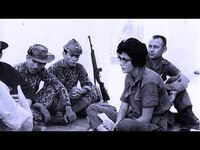
Seven Years a Correspondent covers Beverly Deepe Keever's early life as well as her involvement in journalism during the Vietnam War.
-
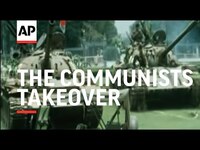
(30 May 1975) RR7522A VIETNAM SAIGON THE COMMUNISTS TAKEOVER
With the Vietnam War now over, the new Communist
rulers have taken charge in Saigon. A WTN camera
crew elected to stay behind as the city fell to record
not only the Communist take-over, but also the first
fifteen days of Communist rule.
Film: Rev – Sound: Mag/SOF – Colour– Available in HD
-
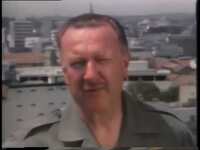
'The memorable broadcast from February 1968 which chronicled Walter Cronkite's visit to the front lines of Vietnam following the Tet Offensive.
The special ended with the now legendary personal commentary from Cronkite declaring that the war was unwinnable, and that the best option was to negotiate for an end to the battle. That analysis would famously lead Lyndon Johnson, watching the broadcast, to declare "If I've lost Cronkite, I've lost middle America."'
-
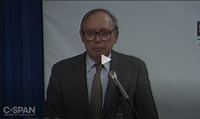
"Stanley Karnow discussed the history of Viet Nam and how America became involved in the country. He answered questions from the audience."
-

Examines American involvement in the Vietnam War, delves into the decision-making process in Washington and Asia, and presents interviews with participants on both sides.
-
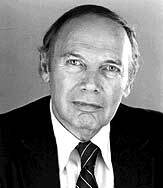
A well-known journalist and author, Stanley Karnow was among the first reporters on the ground with American advisors in 1959, and focused his efforts on understanding the impact of the conflict on the people of Vietnam rather than purely the politics of the time. He spent over thirty years working in the field in south-east Asia and won several awards for the works he published from his experiences there. Publishing numerous books and receiving a Pulitzer, Emmy, and numerous other awards for his journalism. Famously he was on Nixon's "enemy's list" for his coverage of the conflict. He spearheaded the documentary "Vietnam; A Television History" which went on to become the most-watched public broadcast work during its premier run in 1983. He continued to make waves with his reporting on Asia until his retirement in 2010.
-
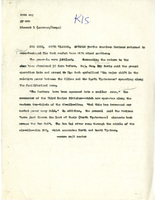
This is Beverly Deepe Keever's written account of the conflict that occurred in Khe Sanh. The article includes a description of the battle incorporated with accounts of American and South Vietnamese soldiers.
-

-

Beverly Deepe Keever grew up in Nebraska. Keever's education included acquiring a degree in journalism and political science from the University of Nebraska-Lincoln. She also continued to go on and receive her master's degree from Columbia University School of Journalism. After the completion of her higher education, Keever traveled throughout Asia eventually landing in Vietnam. Keever spent seven years covering stories in Vietnam with a primary focus on the war. Her contributions to journalism were thought of highly as she was published by various newspapers. Keever was also nominated for the Pulitzer Prize for her coverage of the battle of Khe Sanh in 1969.





















